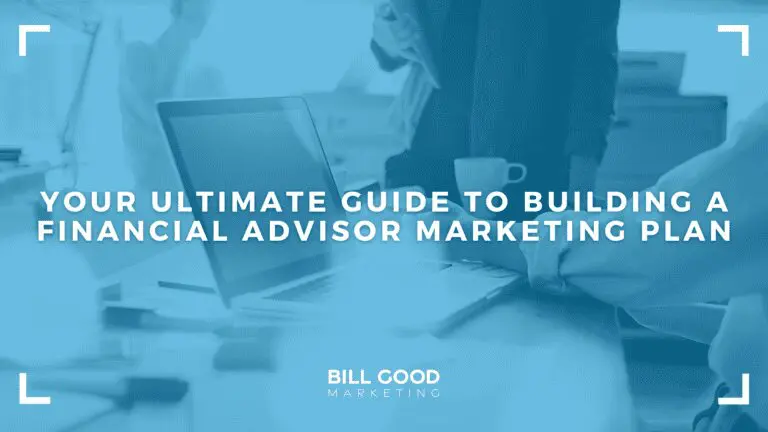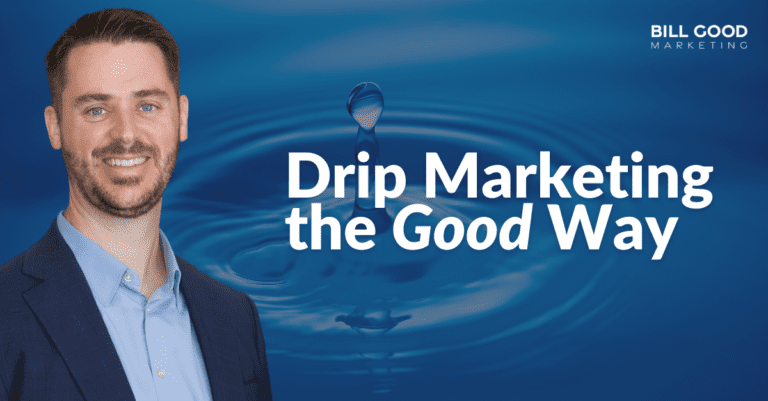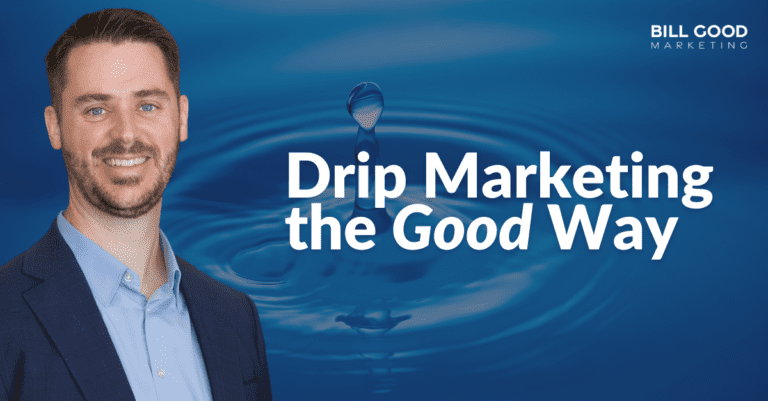Navigating the world of LinkedIn can be quite an adventure for financial advisors. Think of it as your digital playground, where connections, influencers, and prospects mingle. It’s not just about throwing your name out there; it’s about crafting a presence that resonates with LinkedIn users, turning your profile into a lead generation powerhouse…

For those in the know, financial advisors are still the best and fastest way for those who need some extra help tackling their goals within their specific situation.
However, this type of person is scarce. Now that people can look up financial advice on the fly through their phone, most think they wouldn’t need a financial professional to help them get to their financial goals.
Which makes educating the rest of the population on how you can help them better their financial lives a part of your job description.
Marketing is the engine that drives your financial advisory practice forward.
While financial advisors are excellent at various skills necessary in the financial services industry—such as financial planning, managing portfolios, retirement planning, and client consultations—no one really taught you how to put your practice out there.
In this guide, we’ll show you how you can create a marketing plan—an essential part of every marketing initiative—and the seven channels we recommend you get started with.
Why Is Marketing Important for Financial Advisors?
Marketing helps you build trust with new leads, attract new clients, retain existing clients, and ultimately, grow your business.
Moreover, it enhances the value of your practice by increasing its visibility and reputation in the market.
Without a solid financial advisor marketing strategy, even the most skilled financial advisors may struggle to expand their client base and increase their revenue.
Being the world’s best financial planner isn’t enough anymore. You also need to be able to attract clients and let them know that you have the skillset to help them achieve their financial goals.
To get clients through the door, you need to walk them through everything. Starting with why they need a financial advisor in the first place and making sure that you’re the one they go to when they’re looking for one.
The Basics of a Marketing Plan
Every successful marketing program starts with a marketing plan. A well-crafted marketing plan serves as a roadmap guiding your business towards its goals.
Here are some foundational steps to build a great financial advisor marketing plan:
- Identify your marketing goals. What do you want to achieve with your marketing campaigns? Is it to educate potential clients, attract new clients, retain existing ones, or increase brand awareness? Once you’ve defined your goals, you can tailor your strategies accordingly.
- Identify your ideal client. Who are they? What are their financial goals and challenges? What kind of financial goals are they working towards? Understanding your target audience and building a persona based on your audience—their goals, pain points, even something as simple as their demographics—allows you to create personalized marketing messages that resonate with them.
- Choose the right prospecting channel. There are nine key channels for financial advisors, each with its own costs and benefits. These include referrals, strategic partnerships, seminars, cold calling, direct mail, social media marketing, email marketing, content marketing, and more. It might be overwhelming to tackle all of these at once, so we suggest perfecting 1–2 channels first and adding more as you go.
- Set a budget and timeline. How much are you willing to invest in your marketing efforts, and when do you expect to see results? Some channels are more costly or time-consuming than others, so make sure that you’re being realistic about your plans.
- Share content that brands you as a trusted advisor. It should reflect your values, expertise, and commitment to your clients. Remember, dry, impersonal content won’t cut it. Your content should be personal, warm, and emotionally engaging. In addition, posting search engine optimization (SEO) approved content will help clients find you through search engines if you have a lot of content in your arsenal.
- Implement your plan and track your results. This allows you to measure the effectiveness of your strategies and make the necessary adjustments. Depending on what your plan is, you might need to track different metrics. But the set up will be worth the trouble, especially when you aren’t seeing the results you want and need to change your strategy.
Key Strategies Every Financial Advisor Should Have In Their Marketing Plan, According to the BGM Experts
Real Referrals
Referrals are an invaluable marketing strategy to grow your business. They leverage the trust and confidence that your past and current clients have in your services to attract new clients.
By delivering exceptional service that exceeds your clients’ expectations, you encourage them to share their positive experiences with their network.
This strategy builds top-of-mind awareness, meaning your existing clients will think of you first when someone they know needs financial advice. The beauty of this approach is that it eliminates the need for that dreaded “who do you know needs a financial advisor” question, making the referral process more organic and less transactional.
Strategic Partnerships
Strategic partnerships are collaborations with other businesses or professionals that can enhance your visibility and reach.
This could involve partnering with accountants, attorneys, or any other professionals who serve a similar target market. By offering complementary services, you can provide more value to your clients and reach potential clients who may not have been accessible through your own network.
Strategic partnerships can significantly amplify your marketing efforts and lead to mutual growth for both parties involved. Our “Strategic Partner Process” guides you through six steps to identify, qualify, and maximize these partnerships.
Seminars and Webinars
Seminars and webinars are effective platforms for demonstrating your expertise and providing value to your audience. They allow you to engage with your audience on a personal level, answer their questions, and address their financial concerns.
The success of your seminar marketing hinges on six factors, which we refer to as the Seminar Success Zone. These six factors will help you gauge whether your seminars and webinars are a powerful tool for attracting and retaining clients.
When one of these factors is lacking, the other five will have to be above average to even things out. If two or more are lacking, it’s time for an overhaul to get these factors within the zone.
Cold Calling
Cold calling is a traditional yet effective marketing strategy. It involves reaching out to potential clients directly, usually over the phone.
While it may seem daunting, cold calling can be highly effective when done right.
It allows you to directly communicate your value proposition to potential clients, and with the right cold calling scripts, strategies, and techniques, you can find hot prospects faster than any other method.
The key to successful cold calling is to approach it as a conversation rather than a sales pitch. It’s about understanding the needs of prospective clients and offering solutions, not just selling your services.
True Connections
Our Connections Strategy is all about building genuine, meaningful relationships with your clients.
It involves staying in touch with your clients regularly, but without the intention of selling or soliciting. The goal is to show your clients that you care about them beyond their business, which keeps you top of mind without the awkward conversations.
This could involve sending them a birthday card, congratulating them on a milestone, or sharing a piece of content that you think they might find interesting.
By fostering true connections, you encourage your clients to reach out to you when they need financial advice, eliminating the need for awkward solicitation conversations.
Direct Mail
Direct mail is surprisingly effective compared to other lead generation approaches.
In an era dominated by digital communication, direct mail stands out as a personal and thoughtful marketing strategy. It involves sending physical mail, such as letters, postcards, or brochures, to your current or potential clients.
Many people appreciate the effort and personal touch of a real letter, making direct mail an effective strategy for capturing attention and building relationships. It allows you to communicate your message in a tangible way that can be more memorable than an email or social media post.
TIPPing
“TIPPing,” or “Targeted In-Person Prospecting,” is a proactive marketing strategy that involves personally visiting potential clients. Instead of making a cold call, you drop in on wealthy business owners from a targeted list.
This approach allows you to make a strong first impression and establish a personal connection with potential clients.
It shows your commitment and initiative—a great thing to be remembered for if you’d like to stand out from the competition.
Successfully Grow Your Business with the Help of Bill Good Marketing
Marketing helps you get clients through the door.
And with the industry shrinking by the day, marketing has become a core skill that financial advisors need to master to survive past their rookie years.
Digital marketing strategies are the easiest to implement. A few examples of digital marketing tactics include optimizing your financial advisor website by changing your calls to action (CTAs), showing up as an authority on social media platforms like LinkedIn, or even guesting on podcasts you know your clients listen to.
Even traditional marketing strategies can be more effective when done thoughtfully. For example, direct mail, TIPPing, and cold calling gives a more personal touch, which can help you stand out from competitors.
Whatever your marketing idea is, make sure that you have a robust plan and process to execute.
When you’re ready to build your own growth machine, Bill Good Marketing has the experience and framework you need to implement the strategies mentioned in this article and more.
Skip the trial-and-error phase.
Give us a call at 888.495.7303 and let’s talk about how you can create or improve your marketing strategy so you can get more clients through the door with the help of Bill Good Marketing’s expert team.
Earlier this year, when business as we knew it changed, Chad adapted. He tested different approaches to growth by leveraging technology. He learned from the changes 2020 brought. He adjusted his approach to marketing in the new environment. He continued to grow. In fact, he has grown as much in 2020 as in years past while also dramatically reducing costs…
You have had countless clients tell you, “I referred you to a friend.” But the friend never called. That’s the referral gap, the difference between the number of clients who refer you and the number of referrals you actually receive. The gap is staggering– as many as 20% of your clients, when surveyed, say they have provided a referral…
If you were to make a list titled “GOOD MARKETING IDEAS”, running a Monthly Drip Campaign to stay in front of your clients and prospects would be near the top of the list. This means sending at least one message every month on a subject your clients and prospects are truly interested in. Why is drip marketing so powerful…









